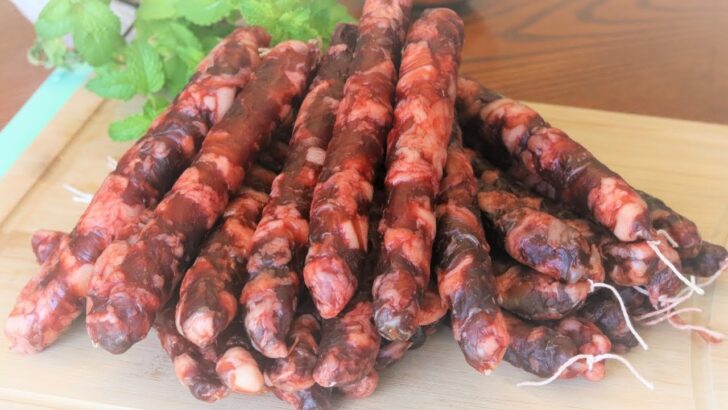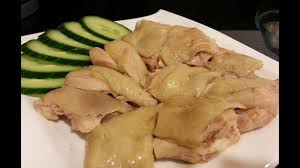INGREDIENTS
- 2 kg of pork (I combined 1 kg of pork shoulder and 1 kg of pork belly together)
- 40 grams (2 tbsp +1 tsp) of salt
- 130 gram (10 tbsp +1 tsp) of sugar
- 5 grams (1.5 tsp) of red yeast powder (optional, you can skip it or use food coloring)
- 60 grams (4.5 tbsp) of high-level alcohol (at least 30%)
- 40 grams (2 tbsp +1 tsp) of soy sauce
- Lamp or pork sausage casing
- A sausage stuffer
- Some rope to tie the sausage
INSTRUCTIONS
– You can use pork belly, pork shoulder, pork butt. What I like to do is combine 1 part of pork shoulder and 1 part of pork belly together. Pork belly is about 50% fat and the pork shoulder is pretty lean. By combing 2 kinds of cut together, you control the fat ratio in between 25-30%. You don’t want to use completely lean meat because the sausage will dry out as the day goes by. Without the fat, it will be tough, dry, and difficult to chew. The more fat it has, the juicer it will be. If you do want to use 50% fat ratio, go ahead but it just not something that I prefer.
– Cut all the pork into thick strips first. Then slice it into small pieces. Use half frozen pork, it will be easier to work with.
– The reason I don’t use ground pork is that it does make a big difference. I prefer the sausage that when you take a bite, there are real meat pieces inside. This is the way how the traditional Chinese sausage is made for centuries. You could use ground meat thought but it does come out differently in texture. It might look like too much work but it is definitely worth it to me.
– Next, combine all the seasoning together and mix well: 40 grams of salt, 130 gram of sugar, 1.5 tsp of red yeast powder, 40 grams of soy sauce, 60 grams of high-level alcohol.
– Red yeast powder is an optional ingredient, you can skip it or use food coloring. It doesn’t affect the taste at all.
– The alcohol content needs to be at least 30%. The higher, the better. Also, you want to use the alcohol that doesn’t have that much flavor so it doesn’t affect the final taste. Do not skip the alcohol because it has many purposes in this recipe. It kills the bacteria, also changes the flavor and texture of the fat as the day goes by.
– Pour the sauce into the meat. Mix this until well combined. Let it sit in the fridge for 2 hours and we are going to prepare our sausage stuffer and casing.
– There are many types of casing. For this recipe, you want to use lamb or pork casing. It stored with a lot of salt. Wash off all the salt then soak it in clean water.
– Besides that, you will also need some rope to tie the sausage.
– Take one casing. Find the end and put it on the sausage stuffer tube. Make sure you don’t have sharp nails or else you might cut the casing by accident. Keep doing it until you reach the end. Tie a knot at the end to close it.
– Put the meat into the container. Tug it tightly so you don’t get too many bubbles. Start pressing the sausage stuffer and the sausage will come out. You want to do this evenly. Once it reaches the length that you like, Pinch the sausage a little bit and tie it with the rope. We are not using ground meat making sausage so the pinch and twist method won’t work here.
– You just keep doing this until all your meat is filled. It is a bit time-consuming. It took me about 40 minutes to fill up 2 kg of sausage.
– Use a toothpick to poke all the air bubbles so the sausage can be firm and tight.
– Put all the sausage on a drying rack. and let it sit in the fridge uncovered for 10 – 15 days. Depends on the humidity and the temperature. If you see the surface is completely dry, that means it is good. The final product looks a little bit darker than the ones you buy from the store, that is because I used the nature red yeast powder for color instead of food coloring. Also, the store-bought sausage contains much more fat. Lean meat usually courses darker result but it is definitely delicious.
– Just simply store them in a sealable bag. It will last 2 months in the fridge and 6 months in the freezer.
Enjoy your meal! If you have any questions about the recipes, just post a comment, will help you out as soon as possible!
…and if you’ve read this far, might as well subscribe. More recipes coming soon =)





